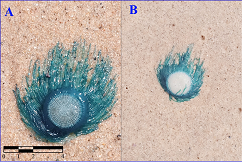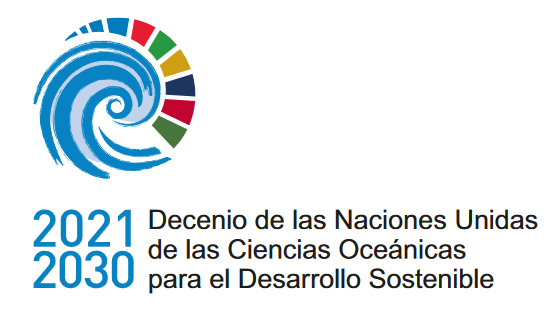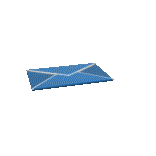Arribazón de medusa azul Porpita porpita en las playas de Visakhapatnam, India (Bahía occidental de Bengala)
DOI:
https://doi.org/10.47193/mafis.3622023010505Palabras clave:
Medusa, Porpitidae, pesquerías, zooplancton gelatinoso, trama tróficaResumen
Porpita porpita se encuentra en las aguas tropicales y subtropicales de los océanos Pacífico, Atlántico e Índico, y el número masivo de colonias varadas parece estar aumentando. Aunque su presencia en las aguas de la India es mínima, este es el primer registro de P. porpita en las aguas costeras de Visakhapatnam. El presente estudio proporcionó una descripción detallada de la especie y su distribución global. Además, el aumento percibido en las floraciones de zooplancton gelatinoso en el área observada, indica que las medusas pueden afectar negativamente a las pesquerías porque compiten con los peces zooplanctívoros, se alimentan de huevos y larvas de peces, e indirectamente compiten con niveles tróficos más altos al reducir el plancton disponible para los planctívoros. Por el contrario, las medusas también juegan un papel vital en la regulación de las redes alimentarias del plancton marino global, la dinámica espacio-temporal y la biomasa, un papel que generalmente se ha descuidado hasta ahora.
Descargas
Referencias
Bieri R. 1970. The food of Porpita and niche separation in three neuston coelenterates. Publ Seto Mar Biol Lab. 27 (5): 305-307.
Bouillon J. 1984. Sur la méduse de Porpita porpita (Linné, 1758) (Velellidae, Hydrozoa, Cnidaria). Indo-Malay Zool. 1: 249-254.
Bouillon J, Medel MD, Pages F, Gili JM, Boero B, Gravili C. 2004. Fauna of the Mediterranean Hydrozoa. Sci Mar. 68 (2): 1-448.
Boukhicha J, Tlig-Zouari S. 2021. Porpita porpita (Cnidaria, Hydrozoa) expands its range: first record in the southern Mediterranean coasts. Afric J Ecol. 60: 796-799.
Brinckmann-Voss A. 1970. Anthomedusae/Athecata (Hydrozoa, Cnidaria) of the Mediterranean. Part I. Capitata. Fauna e flora Golfo di Napoli. 39: 1-96.
Calder DR. 1988. Shallow-water hydroids of Bermuda: the Athecatae. Life Sci Contrib R Ont Mus. 148: 1-107.
Calder DR. 2010. some anthoathecate hydroids and limnopolyps (Cnidaria, Hydrozoa) from the Hawaiian archipelago. Zootaxa. 2590: 1-91.
Chowdhury MSN, Sharifuzzaman SM, Chowdhury SR, Hossain MS, Rashed Un-Nabi, MD. 2016. First record of Porpita porpita (Cnidaria: Hydrozoa) from the coral reef ecosystem, Bangladesh. Ocean Sci J. 51 (2): 293-297.
[CMFRI] Central Marine Fisheries Research Institute. 2010. Unusual occurrence of Porpita porpita in Aadri beach, Gujrat. CMFRI News Letter 126 (July-September 2010): 1-23.
Daniel R. 1979. Chondrophora of the Indian Ocean. J Mar Biol Assoc India. 18: 110-121.
Davies TE, Beanjara N, Tregenza T. 2009. A socio-economic perspective on gear-based management in an artisanal fishery in south west Madagascar. Fish Manag Ecol. 16: 279-289.
Fisner M, Mayal EM, Medeiros C, de Freitas JV. 2008. A new register of Porpita porpita (Linnaeus, 1758) in the state of Pernambuco, NE Brazil. Atlantica (Rio Grande). 30: 171-172.
Fox R. 2007. Invertebrate anatomy online. Velella velella, by the-Wind Sailor. [accessed 2015 Nov 1]. https://lanwebs.lander.edu/faculty/rsfox/invertebrates/velella.html.
Fredrick WS, Ravichandran S. 2010. Anti-microbial activity of the cnidarian blue button Porpita Porpita (Linneaus, 1758). Middle-East J Sci Res. 5 (5): 355-358.
Ganapati PN, Subba Rao DV. 1959. Dredging and phytoplankton production. Curr Sci. 27: 349-350.
Graham WM, Martin DL, Felder DL, Asper VL, Perry HM. 2003. Ecological and economic implications of a tropical jellyfish invader in the Gulf of Mexico. Biol Invas. 5: 53-69.
Gravili C, Boero F, Licandro P. 2008. Hydrozoa. Biol Mar Medit. 15: 71-91.
Gul S, Gravili C. 2014. On the occurrence of Porpita porpita (Cnidaria: Hydrozoa) at Pakistan coast (North Arabian Sea). Mar Biodiv Rec. 7: 1-3.
Gurlek M, Uyan A, Karan S, Gokcen A, Turan C. 2020. Occurrence of the blue button Porpita porpita (Linnaeus, 1758) in the Iskenderun Bay, North eastern Mediterranean Coast of Turkey. Acta Adriat. 61 (2): 185-190.
Kirkendale L, Calder R. 2003. Hydroids (Cnidaria: Hydrozoa) from Guam and the Commonwealth of the Northern Marianas Islands (CNMI). Micronesica. 35/36: 159-188.
Kubota S, Tanase H. 2007. Exceptional winter stranding of Porpita pacifica (Chondrophora, Porpitidae) in Tanabe Bay, Wakayama Prefecture, Japan. Nanki Seibutu. 49: 41-42.
Lepoint G, Bernard L, Gobert S, Michel LN. 2016. Trophic interactions between two neustonic organisms: insights from Bayesian stable isotope data analysis tools. Belg J Zool. 146: 123-133.
Madkour FF, Zaghloul WS, Mohammad SH. 2019. First record of Porpita porpita (Linnaeus, 1758) (Cnidaria: Hydrozoa, Porpitidae) from the Red Sea of Egypt. J Aqua Sci Mar Biol. 2 (2): 24-27.
Mamish S, Durgham H, Ikhtiyar S. 2019. First Record of Porpita porpita Linnaeus, 1758 (Cnidaria, Hydrozoa) on the Syrian Coast of the Eastern Mediterranean Sea. SSRG Int J Agri Env Sci. 6 (2): 47-49.
Moser F. 1925. Die Siphonophoren der Deutschen Südpolar-Expedition, 1901-1903. Deutsche Südpolar-Expedition 1901-1903, 17 (Zoologie Band 9): 1-541.
Pages F, Gili JM, Bouillon J. 1992. Medusae (Hydrozoa, Scyphozoa, Cubozoa) of the Benguela Current (Southeastern Atlantic). Sci Mar. 56: 1-64.
Pandya KM, Parikh KV, Dave CS, Mankodi PC. 2013. Occurrence of Hydrozoans from the Saurashtra Coast of Gujarat, India. Res J Mar Sci. 1 (4): 1-3.
Phillips N, Eagling L, Harrod C, Reid N, Cappanera V, Houghton J. 2017. Quacks snack on smacks: mallard ducks (Anas platyrhynchos) observed feeding on hydrozoans (Velella velella). Plankton Benthos Res. 12 (2): 143-144.
Ruppert EE, Fox R S, Barnes RB. 2004. Invertebrate zoology: a functional evolutionary approach. 7th ed. Belmont: Brooks Cole Thomson. 963 p.
Sahu BK, Balirasingh SK, Samanta A, Srichandan A, Singh S. 2020. Mass beach stranding of blue button jellies (Porpita porpita, Linnaeus, 1758) along Odisha coast during summer season. Ind J Geo-Mar Sci. 49 (6): 1093-1096.
Sahu BK, Panigrahy RC. 2013. Jellyfish bloom along the south Odisha coast, Bay of Bengal. Curr Sci. 104 (4): 410-411.
Schuchert P. 1996. The marine fauna of New Zealand: athecate hydroids and their medusa (Cnidaria: Hydrozoa). Wellington: New Zealand Oceanographic Institute Memoir. 106: 1-159.
Schuchert P. 2013. World Hydrozoa database. [accessed 2013 Sep 26]. https://www.marinespecies.org/hydrozoa/aphia.php?p=taxdetails&id=117831.
Totton AK. 1954. Siphonophora of the Indian Ocean, together with systematic and biological notes on related specimens from other oceans. Discov Rep. 27: 1-162.
Zavodnik D. 1987. Spatial aggregations of the swarming jellyfish Pelagia noctiluca (Scyphozoa). Mar Biol. 94 (2): 265-269.
Zhang J. 1999. Hydromedusae and Siphonophora in western waters of Taiwan Island during winter and spring. J Oceanogr Taiwan Strait/Taiwan Haixia. 18: 76-82.

Descargas
Publicado
Número
Sección
Licencia
Derechos de autor 2023 Sujit K. Pattnayak, Krishnan Silambarasan, Annada Bhusan Kar , Pratyush Das, Gummadi V. A. Prasad

Esta obra está bajo una licencia internacional Creative Commons Atribución-NoComercial-CompartirIgual 4.0.
Los autores de los artículos publicados en Marine and Fishery Sciences conservan los derechos de autor de sus artículos, a excepción de las imágenes de terceros y otros materiales añadidos por Marine and Fishery Sciences, que están sujetos a los derechos de autor de sus respectivos propietarios. Por lo tanto, los autores son libres de difundir y volver a publicar sus artículos, sujeto a los requisitos de los propietarios de derechos de autor de terceros y sujeto a que la publicación original sea completamente citada. Los visitantes también pueden descargar y reenviar artículos sujetos a los requisitos de citas. La capacidad de copiar, descargar, reenviar o distribuir cualquier material siempre está sujeta a los avisos de derechos de autor que se muestran. Los avisos de copyright deben mostrarse de manera prominente y no pueden borrarse, eliminarse u ocultarse, total o parcialmente. El autoalmacenamiento en servidores y repositorios de preimpresión está permitido para todas las versiones.
Esta revista ofrece a los autores una política de acceso abierto. Los usuarios pueden leer, descargar, copiar, distribuir, imprimir, buscar o vincular los textos completos de los artículos, o usarlos para cualquier otro propósito legal dentro de la licencia Creative Commons 4.0 (BY-NC-SA), sin solicitar permiso previo del editor o del autor. Esto está de acuerdo con la definición BOAI de acceso abierto.
 https://orcid.org/0000-0003-1431-6463
https://orcid.org/0000-0003-1431-6463





















